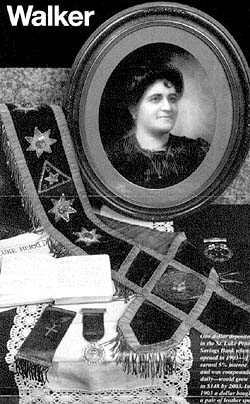What is “heritage preservation”?
When groups of people cherish the same places, landscapes, events, and people as elements of a past remembered or forgotten in common, they are constructing a shared heritage that is crucial in creation of a nation (Anderson 1991). Out of a shared heritage comes the foundation for building and preserving community, society, and nation. Learn more about heritage.
The past and present are linked in symbolic systems that invoke the names of heroes to structure public space. George Washington Carver National Monument and the Maggie Walker National Historic Site are examples of the structuring of public space to commemorate African American heroes. The naming aspect of heritage extends to other public places and spaces like streets, libraries, state parks and museums, keeping social memory alive.
For African Americans, the idea of preserving their heritage within the context of the American heritage experience is not a new one. In fact, African Americans have long advocated preservation of their cultural history.
African American heritage is an integral part of the American heritage experience, yet the sound of African American voices along with other Americans of color, women, and the poor, have too often been silenced, buried, disguised, disqualified and marginalized in telling the American heritage story. Representing the past and the way of life of populations is an expression and a source of power. Inclusion of people’s voices in the representation of their own past and life-ways is empowering (Bond & Gilliam 1995:1).
Heritage preservation takes many forms. In the National Park Service it includes ethnographic research, other disciplinary research and interdisciplinary studies. Ethnographers, archeologists, historians and others conduct research to identify and establish the social and historical significance of cultural resources to associated people. They collect data to inventory, evaluate and register the location and physical state of cultural resources. Ethnographers also do research to establish the cultural ties among past and present groups that used, and may still use, parklands.
Heritage preservation also refers to cultural resource management requirements associated with the National Historic Preservation Act of 1966. Through the Act, Congress declared that “the historical and cultural foundations of the Nation should be preserved as a living part of our community life and development in order to give a sense of orientation to the American people.”
Section 106 of the Act mandates that federal agencies take into account the effects of their actions on properties listed or eligible for listing in the National Register and give the Advisory Council on Historic Preservation a reasonable opportunity to comment. While it does not require the preservation of such properties, it does require that their historic or prehistoric values be considered in weighing the benefits and costs of federal undertakings in order to determine what is in the public interest. Its practical effect is to encourage agencies to seek ways to avoid or minimize damage to cultural resources. Agencies must recognize properties important to communities as well as to the nation as a whole, so they need to be aware of the interests of local groups and individuals. The goal of the process is to make sure that preservation is fully considered in federal actions, thereby protecting our shared heritage from thoughtless or ill-considered damage (Crespi & Mattucks 2000). Learn more about the legal aspects of heritage preservation.
Park Ethnographers participate in meeting Section 106 requirements by acting as cultural brokers facilitating consultation between people who are stakeholders in parks and park personnel involved in planning and management. They conduct ethnographic research to identify people who are stakeholders in parks.






